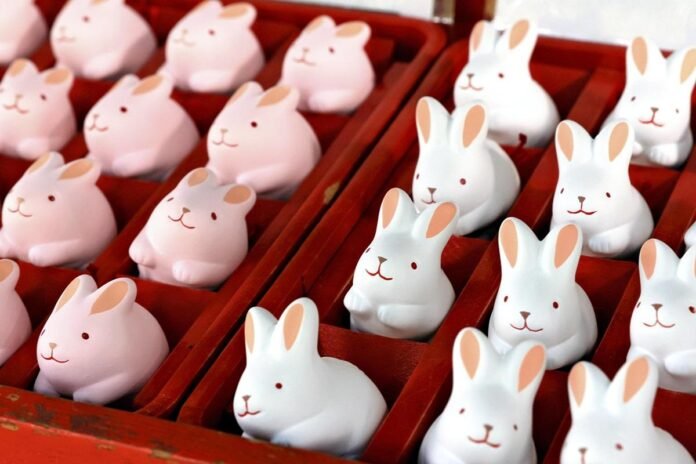Chinese tourists pour water over the Kosazuke Usagi, a black granite rabbit statue, at the Higashi-Tenno Okazaki Shrine in Kyoto’s Sakyo district.
11:56 JST, September 21, 2024
KYOTO — After entering the grounds of Higashi-Tenno Okazaki Shrine through the torii gate and walking along the stone pavement, visitors are soon greeted by stone rabbits. Normally, lion-dog statues called koma inu stand as guardians of the shrine, but visitors will instead find a pair of “koma usagi” rabbits. Standing on their hind legs with long ears spread and bright red eyes, they look adorable.
The shrine is located on Marutamachi Street, one of the main roads running east-west through the center of the ancient capital of Kyoto. The shrine also has koma inu statues on its grounds, but rabbit statues appear one at a time. Among these statues are two “maneki” rabbits, which beckon people and are said to bring money and good fortune, as well as a rabbit on a garden stone. Jumping rabbits are also depicted on paper lanterns.
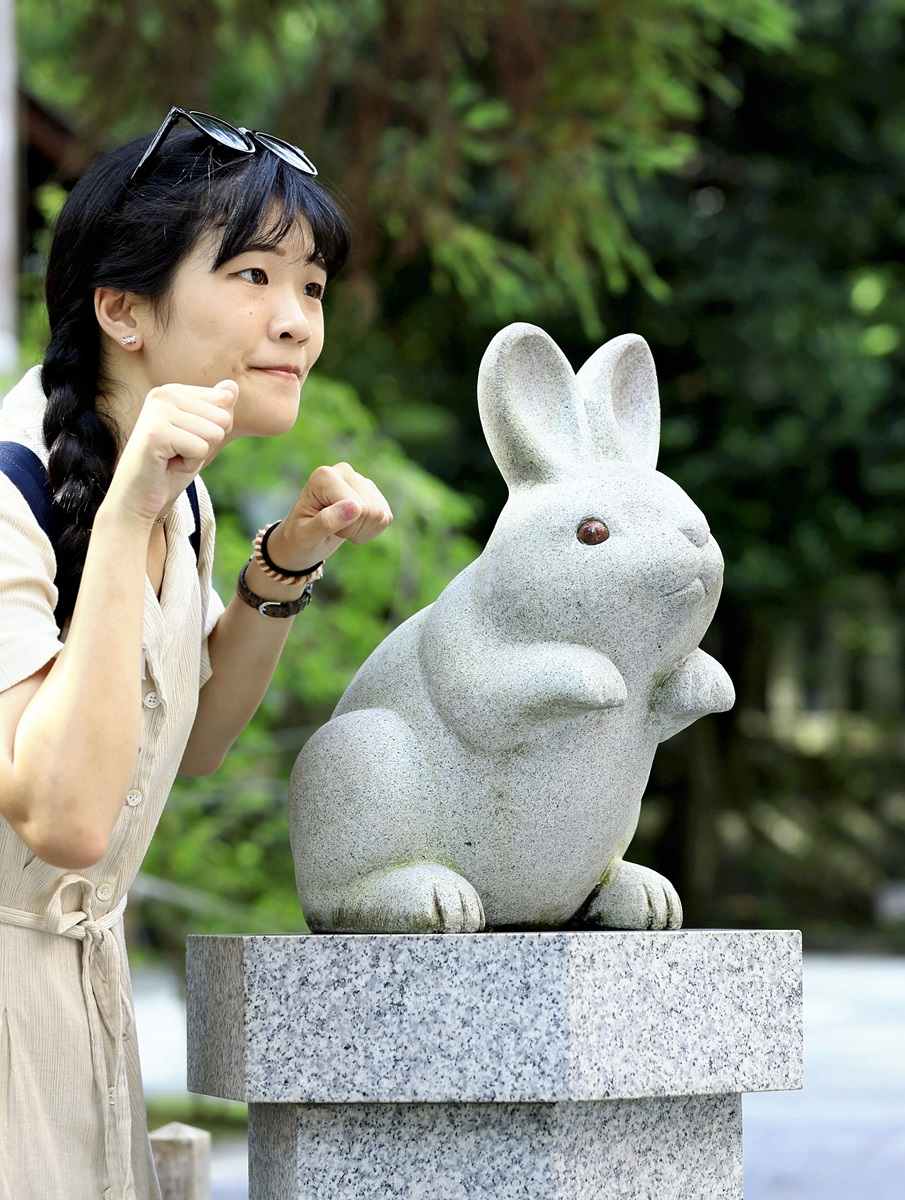
A visitor poses by a rabbit statue. The shrine grounds are home to many such statues, which are popular photo spots.
The star of the show, however, is the Kosazuke Usagi, a black granite rabbit statue that stands by a purification pool where worshippers wash their hands and mouths, attracting people eager to have children. Kosazuke Usagi means “rabbit who gives people children.”
Deities of fertility
Rabbits are prolific creatures, sometimes giving birth to as many as eight young at a time. This shrine, which dates back to the late 8th century when the capital was moved to Kyoto, is located in an area said to have been a habitat for rabbits since ancient times. People considered hares running through the fields to be divine messengers.
The shrine is dedicated to a married couple of deities — Hayasusanoo no Mikoto and Kushiinadahime no Mikoto. They are said to have had eight children and are considered gods of fertility in Japanese mythology.
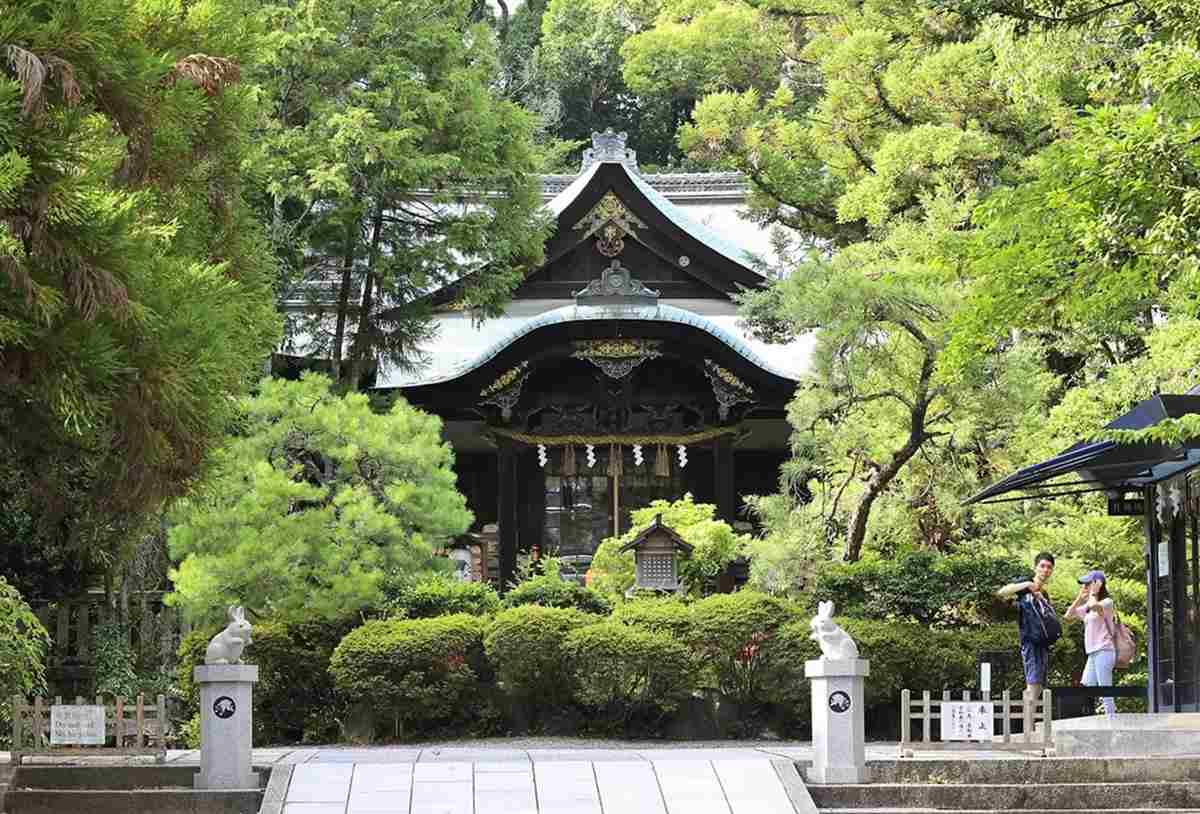
The main hall of the shrine is surrounded by greenery.
The present shrine pavilions and other structures were built in the 20th century, but the portable mikoshi shrines and other objects have been preserved since the Edo period (1603-1867) and are decorated with rabbit ornaments. Rabbits were apparently an essential motif at festivals and other occasions, at least from the Edo period onwards.
There used to be a bronze Kosazuke Usagi statue, but it was removed as part of a metal requisition during the Pacific War. The current statue was installed in 1997. It is said that if people pour water over the statue with a ladle and rub its belly, they will be blessed with a child, so the shrine attracts young couples.
“After visiting the shrine, some people have children and visit again for their children. That makes us happy,” said Takafumi Honda, 62, the shrine’s head priest.
Kawaii culture tree
Some families bring small children to see these rabbits, while many foreign tourists visit after hearing about the sanctuary through social media. Fewer people visited the sanctuary during the COVID-19 pandemic, but the number of visitors has fully recovered.
“We have visitors from all over Asia and Western countries. There are more tourist groups these days,” said Mai Toshida, a 24-year-old employee who works at the front desk. “Everyone seems to enjoy taking photos and videos of the rabbits. Small rabbit figures with omikuji lucky papers inside are also popular.”
When it was first established, the shrine was originally intended to protect the eastern side of the capital. But today it is a rich cosmopolitan place where visitors can experience both Japanese traditions and contemporary kawaii or cute culture.
Rabbit Charms with Fortune
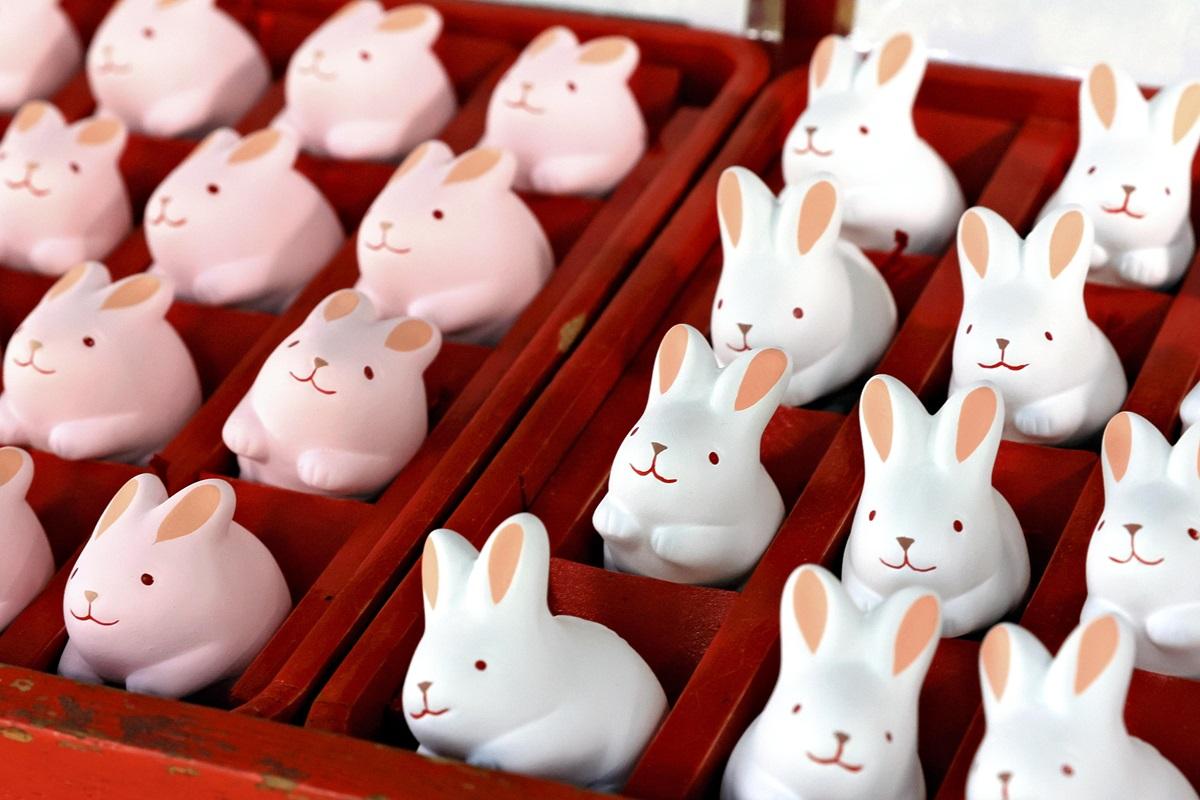
Rabbit-shaped charms containing omikuji lucky notes
The amulets offered at the shrine are all associated with rabbits. One type of amulets, a small rabbit figure containing an omikuji fortune, can be purchased for ¥500. The white and pink figures are made of materials that resemble clay bells, which are meant to ward off evil. Their cute appearance and the distinctive fortunes found inside delight visitors.
Pouch charms with a jumping rabbit design cost ¥1,000 each. These rabbit designs are meant to help people jump over difficulties and hardships. Charms for good luck in marriage and money, as well as for passing entrance exams, are available for ¥1,000 each. They are all decorated with rabbits.
How to get there
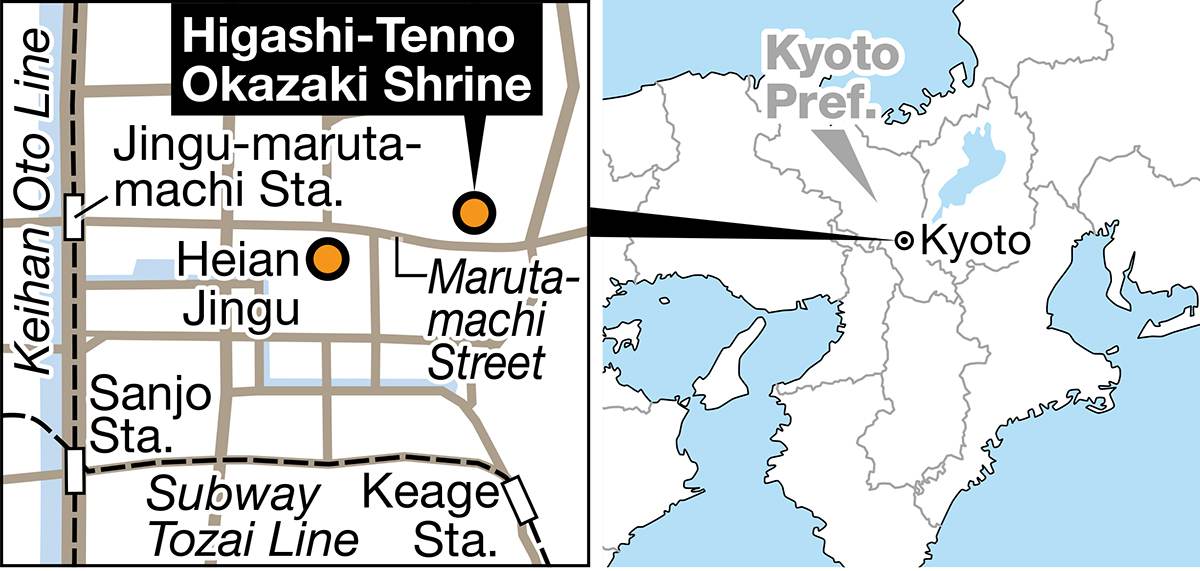
Take a Kyoto City Bus to the Okazaki Jinja-mae stop or the Higashi-Tennocho stop. From Keage Station on the Tozai Line of the Kyoto Municipal Subway, walk north for 15 minutes.


